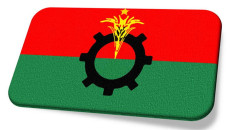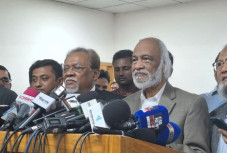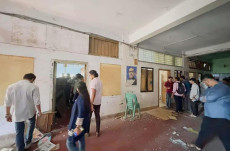
Sylhettoday Desk
29 April, 2025 16:42
How a Pope is Elected: The Sacred and Secretive Process Behind Choosing the Leader of the Catholic Church
From papal conclaves to the white smoke signal—explore the history, rituals, and modern-day protocols involved in electing a new pope.

Photo: getty images
The Pope, also known as the Bishop of Rome, is the supreme leader of the Roman Catholic Church, a spiritual figure who influences over 1.3 billion Catholics worldwide. But how is this revered religious leader chosen? The election of a pope is a process steeped in centuries-old tradition, sacred rituals, and absolute secrecy. Here's a deep dive into how a new pope is elected when the papal seat—called the Holy See—becomes vacant.
When Does a Papal Election Occur?
A papal election is triggered by either the death or resignation of the sitting pope. While most popes serve until death, Pope Benedict XVI made headlines in 2013 by becoming the first pope in nearly 600 years to resign.
Once the papacy is vacant, preparations begin immediately. The process is overseen by the College of Cardinals—the body of senior church officials who advise the pope and ultimately elect his successor.
Who Can Be Elected Pope?
Technically, any baptized male Catholic is eligible to become pope. However, in practice, the College of Cardinals always selects one of their own. This is largely due to the complexities of the role, which require deep theological understanding, leadership, and familiarity with the Vatican's internal workings.
The Papal Conclave: Where the Election Happens
The election of a new pope takes place in a gathering called the papal conclave. The word conclave comes from the Latin "cum clave," meaning "with a key," referring to the strict seclusion under which the cardinals deliberate and vote.
Held in the Sistine Chapel within the Vatican, the conclave begins 15 to 20 days after the papal seat becomes vacant. During this time, the cardinals are locked inside with no contact with the outside world—no phones, internet, or news updates. This is to ensure confidentiality and divine focus.
The Voting Process
1. Daily Voting Rounds: Up to four votes can be cast per day—two in the morning, two in the afternoon.
2. Majority Required: A two-thirds majority is required to elect a new pope. If there are 120 cardinals, for example, at least 80 must agree on one candidate.
3. Secrecy: Each cardinal writes a name on a secret ballot, folds it, and places it into a chalice on the altar.
4. Burning the Ballots: After each round, the ballots are burned. If no candidate is elected, a chemical is added to produce black smoke (fumata nera), signaling an unsuccessful vote. White smoke (fumata bianca) announces a successful election.
“Habemus Papam”: We Have a Pope
Once a candidate receives the necessary votes, he is asked: “Do you accept your canonical election as Supreme Pontiff?” If he replies “Accepto” (I accept), he then chooses a papal name—often in honor of a previous pope or saint.
Soon after, the new pope appears on the balcony of St. Peter’s Basilica, where the senior cardinal proclaims to the crowd below: “Habemus Papam” (We have a pope). The new pope then offers his first apostolic blessing to the world.
Modern Adaptations in an Ancient Tradition
While the rituals are ancient, some modern touches have been introduced. Since the Second Vatican Council (1962–1965), the church has emphasized more international representation among cardinals. The last few elections have seen increased scrutiny from the media and the faithful, pushing for transparency and reforms—though the secrecy of the conclave remains untouched.
Why This Process Still Matters
In a world increasingly influenced by technology, politics, and polarization, the papal election remains a powerful symbol of continuity, unity, and faith. The Pope not only leads Catholics spiritually but also acts as a global voice on issues like poverty, climate change, war, and human rights.
Conclusion
The election of a pope is one of the most sacred and watched events in the religious world. From the dramatic smoke signals to the ancient chants of “Habemus Papam,” it’s a process that combines divine tradition with human deliberation. Whether you're Catholic or simply curious, understanding this intricate election shines a light on the enduring power and symbolism of the papacy.







 সিলেট সিপিবি সাধারণ সম্পাদক সুমন ‘আটক’
সিলেট সিপিবি সাধারণ সম্পাদক সুমন ‘আটক’ 




 IT Lab Solutions Ltd.
IT Lab Solutions Ltd.
আপনার মন্তব্য